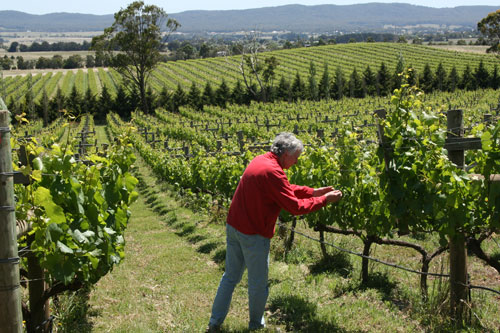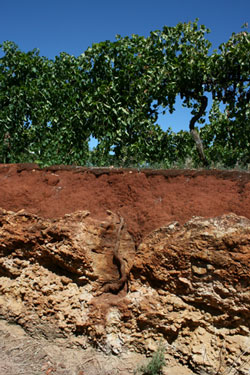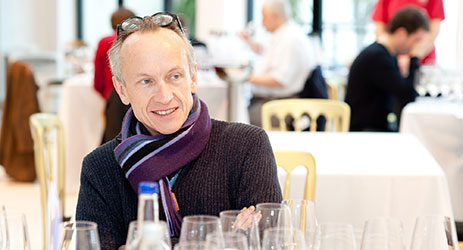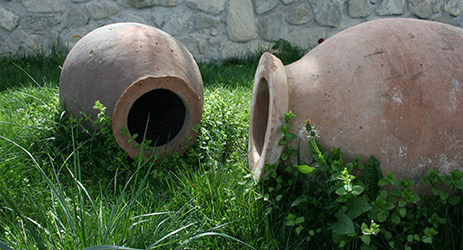Jefford on Monday
It was hidden away on page 16 of the 32-page proposal. Not in italics; not in red ink either. Perhaps it should have been. “One of the most disturbing trends,” wrote the author, Tony Battaglene of the Winemakers’ Federation of Australia, “has been the dramatic decline in the export sales of higher value wines.”

This was a significant document: the August 2012 proposal to merge Wine Australia with the country’s Grape and Wine Research and Development Corporation in order to create one “national delivery agency” for wine policy and practice. It was accepted by the government late in 2012. By this time next year, the merger should be almost complete.
Why has Australia, with its lavish research traditions and its native flair for marketing, decided to do this? To save money, for a start: up to one million Australian dollars in administrative costs. But it has also done it in order to adapt what it calls its “industry strategy” to new circumstances. Namely, the fact that Australia has lost (as the report also noted) $1 billion in sales value over the last decade.

That, though, isn’t enough. A nation whose fine wines aren’t sought-after, collected and treasured by connoisseurs everywhere will fail to gain (or gradually lose) international credibility, and with it economic buoyancy. As Mr Battaglene drily noted, “the long-term sustainability of the Australian wine-sector will depend on the production of high-value product.”
Most nations are good at identifying their own problems, but fail to solve them because they choose culturally comfortable solutions. Australia’s wine community, I suspect, will carry on using lavish research funding (the GWRDC’s budget was $23.48 million in 2010-11) to find ingenious technical fixes to a multitude of difficulties; they will carry on using science, teamwork and liberal enterprise to create further efficiencies, and continue to regard technically pristine Australian aesthetic norms as the ones which really count. But the end result of all of that is a set of fine wines which are more often admired than loved. They win competitions, but fail to empty wallets and set hearts pounding. Here, ready to be ignored, are a few prickly solutions to solving Australia’s sagging fine-wine appeal.
Siphon off a big wad of the research budget and use it to create a well-endowed Institute of Geographical Indications which will actively support, champion and refine regional identity in Australian wine creation. Give a warm corporate hug to a concept which many in Australia still regard as vaguely suspicious: terroir. Remember that it means a respect for raw materials first and foremost. Accept the results: it will at least be different to that which went before.
Create financial incentives to diversify Australia’s grape-variety mix. Help import top quality plant material for a range of new varieties, together with the expertise about where they might best flourish. (Australia grows wonderful Shiraz, Chardonnay and Cabernet, but with more than 60 per cent of plantings these three varieties are almost oppressively ubiquitous.)

Endow a set of scholarships to research naturally articulated winemaking practices at all of Australia’s leading wine educational institutions, and encourage classes for such wines at all of Australia’s leading shows. Provide grants to expand Australia’s overall fermentation capacity, so that no serious red wine ever needs to be hurried prematurely off its skins. Institute a professional exchange programme which would enable leading French and Californian wine-making consultants to work, over a 10-year-period, with Australian wine-makers (and vice-versa). Do the same for Italian and Australian label-designers; the benefit in both cases would be reciprocal. Foster alternatives to the dreary glass bottles which existing suppliers like Amcor foist on their customers, so that beautiful bottles no longer have to be shipped all the way from Europe only to be filled and sent back. And give those who don’t want to use screwcaps a break: their wine, their choice.
I realize that all of this is about as likely as comprehensive gun control in the USA, a mandatory 120 kph speed limit on German autobahns, or a French return to a 40-hour working week and retirement at 66. Change, though, has to come – and prickly solutions are most effective. 
Columnist Introduction
Andrew Jefford is a columnist for both Decanter magazine and www.decanter.com, Jefford has been writing and broadcasting about wine (as well as food, whisky, travel and perfume) since the 1980s, winning many awards – the latest for his work as a columnist. After 15 months as a senior research fellow at Adelaide University between 2009 and 2010, Andrew is currently writing a book on Australia’s wine landscape and terroirs. He lives in the Languedoc, on the frontier between the Grès de Montpellier and Pic St Loup zones.
Click here to read all articles by Andrew Jefford>>
- Follow us on Weibo @Decanter醇鉴 and Facebook
and Facebook for most recent news and updates-
for most recent news and updates-
All rights reserved by Future plc. No part of this publication may be reproduced, distributed or transmitted in any form or by any means without the prior written permission of Decanter.
Only Official Media Partners (see About us) of DecanterChina.com may republish part of the content from the site without prior permission under strict Terms & Conditions. Contact china@decanter.com to learn about how to become an Official Media Partner of DecanterChina.com.




Comments
Submit